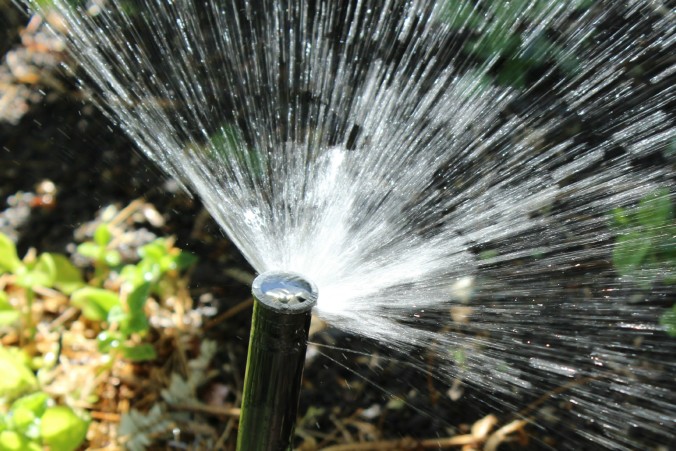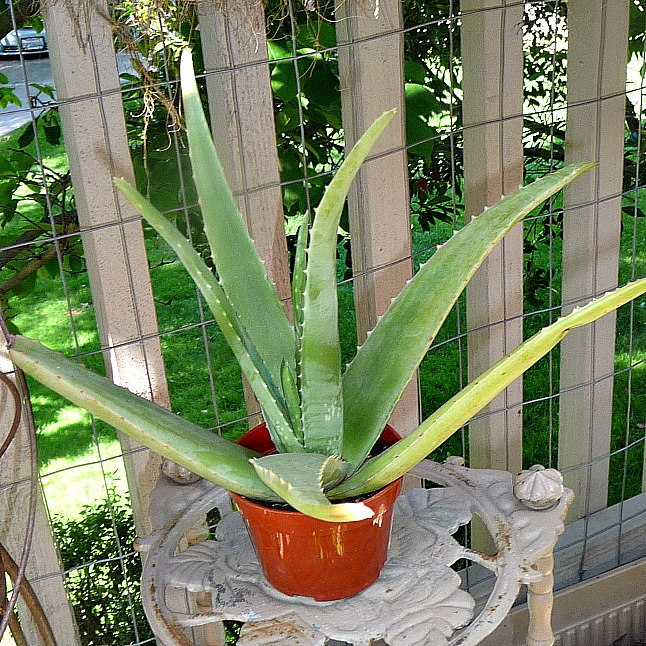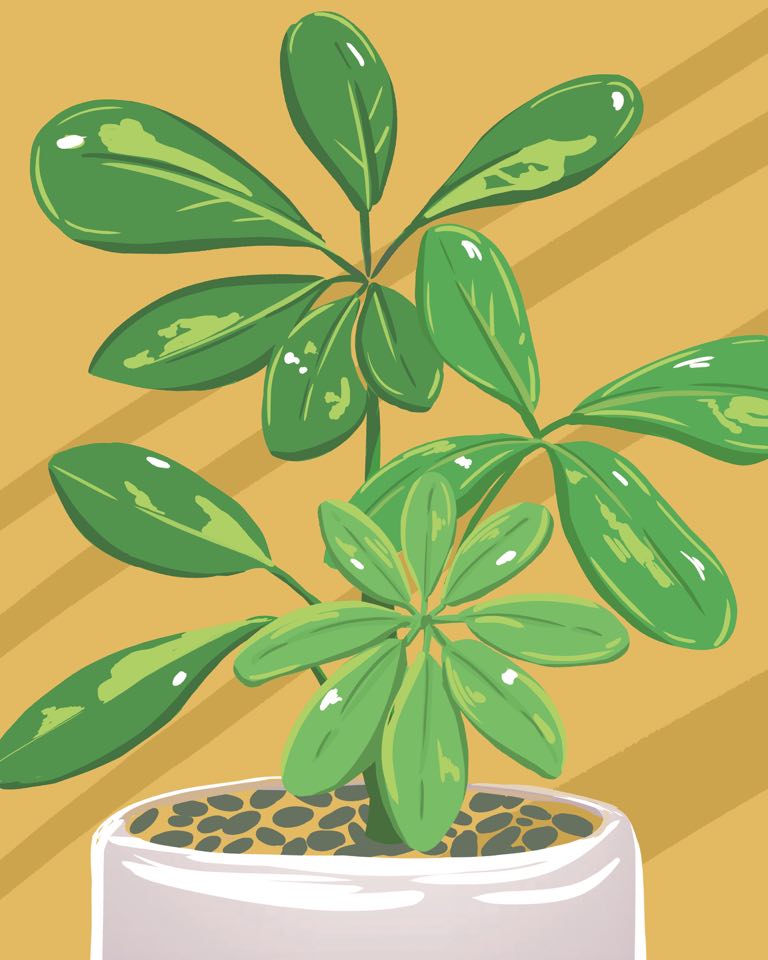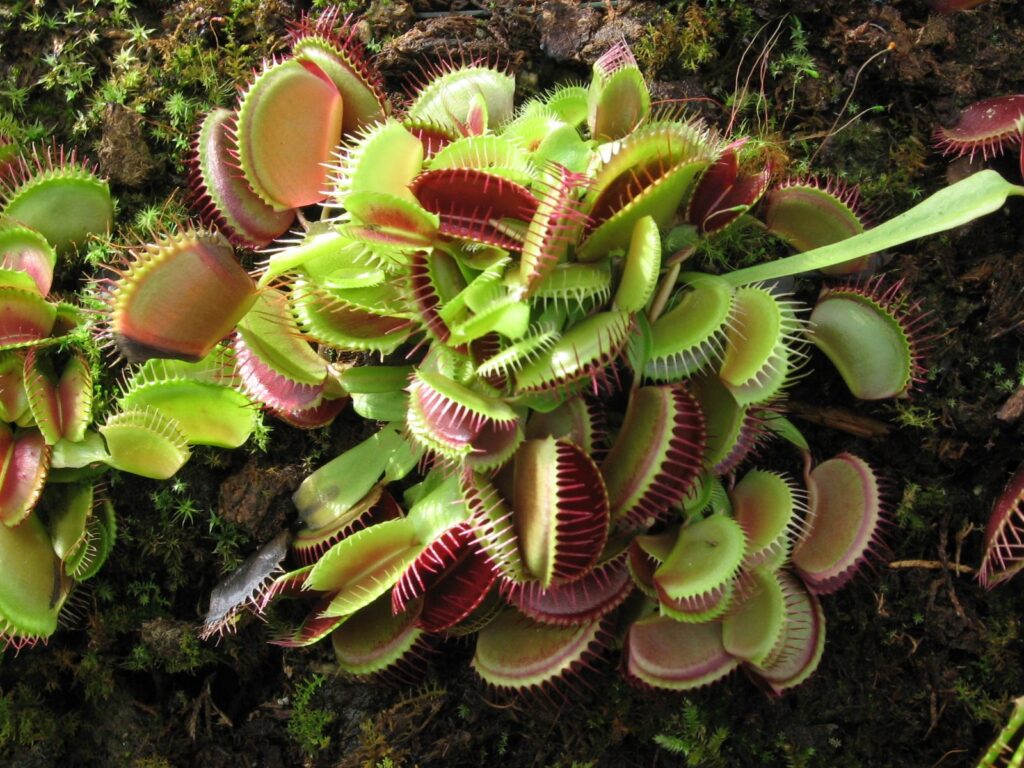Watering

Deep watering is the best way to water plants and is the practice of watering deeply and infrequently. Deep watering improves plant health and saves water by using it efficiently.
Why do Gardeners Tend to Overwater?
Gardeners may overwater their plants because they are afraid of under-watering them. And since many plants tolerate overwatering, this leads gardeners to believe the extra water is needed. However, some plants die from overwatering but the gardener may not suspect themselves as the culprit and instead believe the plant has died from mysterious causes like an unknown disease or nutrient deficiency.
What do Plants Need?
Plant roots need both air and water. Overwatering happens when the soil isn’t allowed to dry out. When a plant is overwatered, normally healthy white roots turn gray and begin to decay. Above ground symptoms include the yellowing of lower leaves and flower bud and/or fruit drop. Plants weakened by overwatering are susceptible to attack from pests. Overwatered plants may die from too much water or from secondary attack by pests.
What is Deep Watering?
Deep watering is the practice of watering established* plants deeply and infrequently which allows soil to dry out. To deep water, saturate the soil around the “drip line” of established trees and shrubs using a hose, soaker hose or drip irrigation. The drip line is an imaginary line where rainwater drips off the plant’s leaves.
Established trees and shrubs need a good soaking about once per month during the dry season. How frequently your plants need deep water is related to your soil type, the temperature/time of year and the type of plant. Find out your garden soil type in Gardening 101: Soil Preparation. Once you know this you can speak to a certified nurseryperson or a Cooperative Extension agent about watering if you need more advice.
New Plants and Watering
It’s important to note that newly planted flowers, trees and shrubs need their root ball kept moist until established. This includes both water-wise and drought tolerant plants. It takes several years to establish a tree, while shrubs and flowers take less time depending upon size and type of plant. To save water, avoid planting in summer.
Established Plants and Watering
Established plants need less water than newly planted plants, and in many cases can thrive on much less water than what you are giving them. Unfortunately, there isn’t a prescription that works well for every landscape on how much water is needed. Factors to consider include climate, soil type, and plant variety.
Watering and Your Soil Type
Your soil type will help you determine how often to water. If your test results show a high concentration of sand, you’ll need to water less deeply and more frequently. Plants in clay soils do best with less frequent deep watering. Loamy or silt based soils also benefit from deep watering.
Hydrozones
Before you install a new landscape, you may want to consider a design that incorporates hydrozones. Hydrozones group plants with similar watering needs together on the same irrigation line. One landscape may have many hydrozones, each using different amounts of water.
In many cases, landscapes are watered according to the plant with the highest water need. For example, if a high-water use plant like a hydrangea is on the same hydrozone as a grouping of water-wise plants like Cleveland sage, California buckwheat and rosemary, the hydrangea would wilt weeks before the other plants needed water. However, most gardeners would water as soon as the hydrangea wilted, first sign of wilting, giving the sage plant more water than it needed. It would be better to keep the hydrangea in a pot and water it separately.






